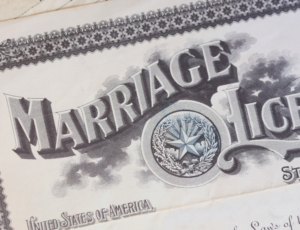Introduction:
Your wedding day is a momentous occasion, and every detail should be perfect, especially your wedding dress. However, finding the ideal fit off the rack can be challenging, which is why wedding dress alterations play a crucial role in ensuring your gown is tailored to perfection. In this comprehensive guide, we will explore the world of wedding dress alterations, covering everything from the types of alterations available to valuable tips, FAQs, and more.
Top 20 Best Wedding Dress Alteration Tips
Your wedding day is one of the most important and memorable days of your life, and your wedding dress plays a crucial role in making you feel like a queen. However, finding the perfect wedding dress off the rack can be challenging, as no two bodies are alike. This is where bridal gown alterations come in. Proper alterations can transform a good dress into the perfect dress, ensuring a flawless fit and making you feel like a million dollars on your special day.
In this guide, we will provide you with nine essential tips for wedding dress alterations. These tips will help you navigate the alteration process smoothly, ensuring that your dress fits like a dream and that you feel comfortable and confident on your wedding day.
1. Stay on Schedule
One of the first and most crucial aspects of wedding dress alterations is timing. Alterations can take time, and it’s essential to start the process early to avoid any last-minute stress. Here’s a rough timeline to keep in mind:
- Start the process at least 2-3 months before your wedding day.
- Schedule your first fitting as soon as your dress arrives.
- Plan for 2-3 additional fittings after the initial one.
- The final fitting should ideally take place about two weeks before your wedding day.
2. Choose the Right Seamstress or Tailor
Selecting the right wedding dress tailor or seamstress is crucial. Look for professionals with experience in wedding gown alterations, as they’ll be familiar with the intricacies of bridal gowns. Ask for recommendations from friends or your bridal boutique, and read reviews online. Schedule consultations with potential seamstresses or tailors to discuss your dress and get a sense of their expertise.
3. Bring the Right Undergarments
Wear the undergarments you plan to wear on your wedding day to your alterations appointments. This includes your bra, shapewear, and any other foundation garments. The right undergarments can significantly affect the fit of your dress.
4. Communicate Clearly
Effective communication with your seamstress or tailor is key. Be clear about your expectations and any specific alterations you want. If you have reference photos or sketches, bring them to your appointments to help convey your vision.
5. Consider Your Shoes
Your choice of wedding shoes can impact the length of your dress. Bring your wedding shoes to your fittings, so the seamstress can adjust the hem accordingly. This ensures that your dress is the perfect length for your height when you’re wearing your wedding shoes.
6. Plan for Weight Fluctuations
If you’re planning to lose weight before your wedding day, be cautious about how much you alter the dress initially. It’s easier to take a dress in than to let it out. Discuss your weight loss goals with your seamstress, and create a plan for when to schedule final fittings and alterations.
7. Allow for Comfort
While it’s important for your dress to look stunning, it’s equally important for it to be comfortable. Make sure you can move, sit, and dance comfortably in your gown. If something feels too tight or restrictive, communicate this to your seamstress, so adjustments can be made.
8. Budget for Alterations
Remember to budget for alterations when shopping for your wedding dress. Bridal gown alterations can range from a couple of hundred dollars to over a thousand, depending on the complexity of the changes needed. Get a quote from your seamstress or tailor before committing to any alterations.
9. Multiple Fittings For Wedding Dress
Plan for multiple fittings. Typically, you’ll have at least three fittings: the initial fitting, a mid-fitting, and a final fitting. Each wedding dress fitting allows for adjustments to be made as the dress takes shape on your body.
10. Pay Attention to Neckline and Bust
The neckline and bust area are critical areas for alterations. Ensure that the neckline sits properly, and the bust area is supportive and flattering. Adjustments here can greatly affect the overall look of your dress.
11. Address the Train
If your dress has a train, discuss how you’d like it to be bustled for easier movement and dancing. There are various bustle styles, so work with your seamstress to find the one that suits your dress best.
12. Be Prepared for Minor Changes
Even with careful measurements and fittings, minor adjustments may still be necessary as your wedding day approaches. Your body can change slightly due to stress, diet, or other factors, so don’t be surprised if small alterations are needed during your final fitting.
13. Don’t Forget About Accessories
Consider how your accessories, such as a veil, belt, or jewelry, will complement your altered dress. Bring these items to your fittings to see how they enhance the overall look.
14. Final Try-On
Before your final wedding dress fitting, do a complete trial run of your wedding day look. Put on your dress, accessories, shoes, and any undergarments to make sure everything fits and feels perfect together.
15. Get It in Writing
Ensure that all alterations discussed, including the timeline and cost, are documented in a written agreement with your seamstress or tailor. This will protect both parties and provide clarity on the services provided.
16. Store Your Dress Properly
Once your alterations are complete, store your wedding dress properly to prevent wrinkles and damage. Ask your seamstress or bridal boutique for guidance on storage.
17. Plan Ahead for Travel
If you’re traveling to your wedding destination, make sure your dress is packed and transported with care. Consider a garment bag and carry it on the plane if possible to ensure it arrives in perfect condition.
18. Trust Your Seamstress
While it’s important to communicate your preferences and concerns, also trust the expertise of your seamstress or tailor. They have experience working with wedding dresses and can offer valuable insights on what alterations will enhance the overall look and fit of your gown.
19. Have a Backup Plan
In case of any last-minute emergencies or unforeseen circumstances, have a backup plan. This could include having a seamstress on call or knowing where to find a reliable local tailor at your wedding destination.
20. Enjoy the Process
Lastly, remember to enjoy the process of wedding dress alterations. It’s a unique and exciting part of your wedding journey. Take the time to appreciate the craftsmanship and care that goes into making your dress uniquely yours.
Types of Wedding Dress Alterations
Wedding dress alterations are a crucial step in achieving the perfect bridal look. They ensure your gown fits you like a glove and flatters your figure. Here are various types of wedding dress alterations:
1. Hemming
Hemming is one of the most common wedding dress alterations. It involves shortening or lengthening the gown to match your height perfectly. This alteration ensures you won’t trip over your dress or have it dragging on the floor, allowing for easy movement.
2. Bodice Alterations
Bodice alterations focus on the upper part of the dress, including the bust, waist, and back. This type of alteration can involve taking in or letting out the dress to achieve the desired fit and silhouette. It’s crucial for achieving that hourglass shape and ensuring your gown stays in place.
3. Sleeve Adjustments
Adding sleeves to a wedding dress or altering existing ones can dramatically change the overall look of the gown. Whether you prefer long, short, or off-the-shoulder sleeves, a skilled tailor can customize your dress to match your vision.
4. Bustle Creation
A bustle allows you to gather and secure the train of your dress, making it more manageable for walking and dancing. There are various bustle styles to choose from, such as the French bustle or the ballroom bustle, each providing a unique and elegant look.
5. Taking In or Letting Out
Weight fluctuations and sizing issues can lead to a need for alterations that involve taking in or letting out the dress. Skilled tailors can adjust the gown to ensure it fits you like a glove, no matter how your body changes.
6. Adding or Removing Embellishments
If you wish to add extra bling or customize your gown with unique embellishments, a talented dress tailor can make it happen. Conversely, they can also remove embellishments that no longer align with your style preferences.
7. Reshaping Necklines
Alterations can modify the neckline of your dress, transforming it into a sweetheart, V-neck, or any other desired shape. This alteration can give your dress a fresh and personalized look.
8. Adding or Removing Straps
Customizing the straps of your wedding dress can be a game-changer. Whether you want to add delicate spaghetti straps or go strapless, alterations can create the neckline and strap style you desire.
9. Resizing the Train
If you find your dress’s train too long or too short for your liking, alterations can adjust its length to create the perfect balance between glamour and practicality.
10. Custom Embroidery or Lacework
For brides looking for intricate detailing, custom embroidery or lacework can be added to create a unique, one-of-a-kind dress that matches your individual style.
Finding a Skilled Wedding Dress Tailor
Finding a skilled tailor to alter wedding gown is crucial to ensure your wedding gown fits perfectly and looks stunning on your big day. Here are some steps to help you find the right tailor for your needs:
1. Start Early
Begin your search for a wedding dress tailor as soon as you purchase your gown. Skilled tailors may have a busy schedule, especially during wedding season, so booking your alterations in advance is essential.
2. Ask for Recommendations
Consult friends, family members, or recently married acquaintances who have gone through the bridal gown alteration process. Their recommendations can lead you to experienced and reliable tailors.
3. Check Online Reviews
Read online reviews and testimonials about local tailors. Websites, social media, and wedding forums can provide valuable insights into the quality of service provided by different tailors.
4. Visit Dress Tailoring Shops
Take the time to visit local wedding dress tailoring shops and speak directly with tailors. This will give you a sense of their expertise and professionalism.
5. Review Their Portfolio
Ask to see examples of their previous work, especially if they have experience with wedding dresses. A skilled tailor should have a portfolio showcasing various alterations and customizations.
6. Inquire About Pricing
Discuss pricing upfront to ensure it aligns with your budget. Be wary of unusually low prices, as they may indicate a lack of experience or lower-quality service.
How Much Does wedding Dress Alteration Cost?
The cost of wedding dress alterations can vary widely depending on several factors, including the complexity of the alterations, the location of the bridal boutique or tailor, and the materials used in the dress. On average, you can expect to pay anywhere from $100 to $600 or more for bridal gown alterations.
Here is a breakdown of potential costs for various types of wedding gown alterations:
- Hemming: Shortening the dress typically costs between $50 and $200, depending on the number of layers and the intricacy of the hem.
- Bustle: Adding a bustle to a wedding gown to lift the train for easier movement can cost between $50 and $150.
- Taking in or letting out: Alterations that involve resizing the dress at the waist, hips, or bust may range from $100 to $300, or more, depending on the complexity of the changes.
- Strap adjustments: If you need straps added, removed, or adjusted, it can cost around $20 to $80.
- Bodice alterations: Modifying the bodice or neckline can vary widely in price, with simple changes starting at around $50 and more complex alterations costing several hundred dollars.
- Adding sleeves or lace: Incorporating additional fabric or lacework can increase the cost significantly, ranging from $100 to $500 or more.
- Custom changes: Any unique or highly customized alterations, such as adding beading, embroidery, or other embellishments, can be quite expensive and may exceed $500.
It’s essential to consult with a professional seamstress or tailor for a personalized estimate, as prices can differ based on your specific dress and requirements. Keep in mind that alterations can take several weeks to complete, so it’s advisable to schedule them well in advance of your wedding date to ensure a proper fit and avoid any last-minute stress.
FAQs on Wedding Gown Alterations
Q1: How long do wedding dress alterations take?
The timeline to alter wedding dress depends on the extent of the alterations and the tailor’s workload. It’s best to start alterations at least two to three months before your wedding to ensure everything is completed in time.
Q2: What should I bring to my appointment for my wedding gown alteration?
For your wedding dress alteration appointment, bring your wedding dress, the shoes you’ll wear on your wedding day, any undergarments or shapewear you plan to wear, and any accessories like a veil or belt. It’s also helpful to bring reference photos of your desired fit and style to ensure a successful alteration.
Q3: How much to alter a wedding dress?
The cost of altering a wedding dress depends on the specific alterations required. Simple adjustments like hemming or taking in the sides may be less expensive than more complex changes like adding sleeves or reshaping the neckline.
Q4: Can sleeves be added to a wedding dress?
Yes, sleeves can be added to a wedding dress through alterations. A skilled tailor can create sleeves that match your gown’s style and your personal preferences.
Q5: Are bridal dress alterations costly?
The cost of bridal dress alterations can vary, but they are a worthwhile investment to ensure your gown fits perfectly and enhances your appearance on your wedding day.
Are You Ready For Your Wedding With That Perfect Dress? Next Are You Looking For Perfect Wedding Venue?
The excitement of finding the ideal gown is only the beginning of your journey to the perfect wedding day. Next on the list is securing the ideal venue that will provide the backdrop for your dream celebration in the vibrant city of Chicago.
For a truly unforgettable experience, consider the exquisite Belvedere Banquets, a premier wedding venue in Chicago. With our elegant ambiance, exceptional service, and a range of customizable options, Belvedere Banquets is the perfect place to turn your wedding dreams into reality. To make your planning easier, we also offers a delectable wedding menu that caters to different tastes and dietary preferences. From appetizers to the main course and decadent desserts, they have it all covered.
At Belvedere Banquets, we understand that the perfect wedding dress deserves an equally perfect setting. Our luxurious banquet halls provide an enchanting backdrop that complements your elegance and style, making your special day even more magical. So, are you ready for your wedding with your dress? Make the moment unforgettable and contact Belvedere Banquets to explore our exceptional offerings. Your dream wedding awaits!
Conclusion:
Wedding dress alterations are the key to turning a beautiful gown into the dress of your dreams. By understanding the types of alterations available and following our wedding dress alteration tips, you can ensure that your dress fits flawlessly and makes you feel like a true bridal vision. Don’t hesitate to invest in alterations to make your wedding day even more magical and memorable. Your wedding dress is more than just fabric; it’s a symbol of your love story, and it deserves to shine as brightly as your love on your special day.






